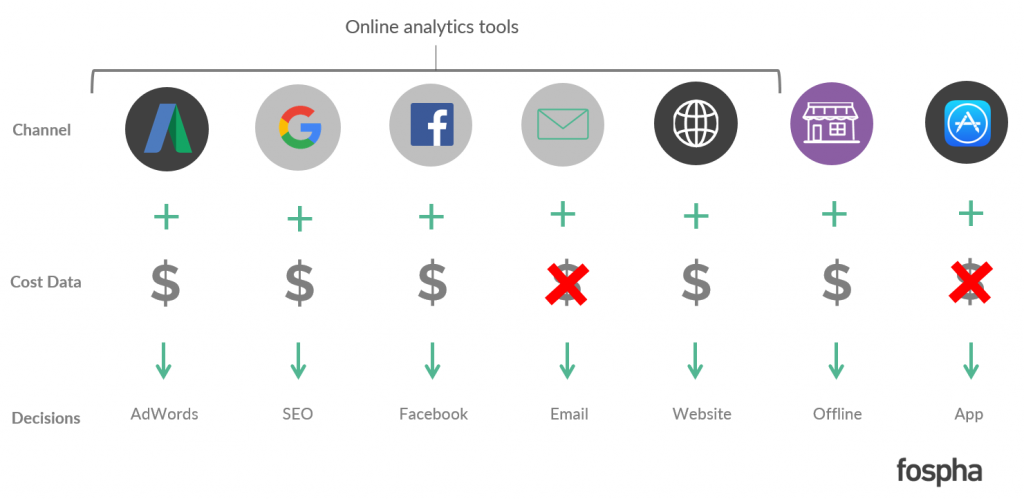How to use your data to supercharge paid search
In today’s marketing climate, data is key. Indeed, more data is generated in a 24-hour period than ever before, with 2.5 quintillion bytes of data being created daily across the globe (IBM, 2017).
The challenge lies in being able to harness this data to optimize marketing activities. After all, without an understanding of what your customers are doing, it is almost impossible to increase conversions and ROI.
One of the key channels for marketers is paid search. Indeed, this is rapidly becoming the most powerful digital marketing channel, with over 2.3 million searches occurring per day. With all these interactions, marketers are paying a premium to get their brand, reflected in the fact that pay-per-click advertising costs are sky rocketing.
Marketers can gain visibility on their paid search activities, and overcome the rising cost of customer acquisition and retention in this channel, by taking control of their customer data.
In my previous article on how to stop Google AdWords campaigns from failing, I looked at how businesses can use a Customer Data Platform to gain a holistic overview of customer conversion, and properly attribute the role of each keyword in the conversion path.
In this article, I’ll expand on how data-driven attribution and the use of a Customer Data Platform can supercharge your paid search activities.
Content produced in partnership with Fospha.
Step 1: Integrate
The key challenge of the rise in multi-channel and multi-device customer journeys is the fact that businesses store this multitude of data in disparate silos, as illustrated in Figure 1.
The result? No unified view of the customer journey, and no understanding of how they are interacting with various marketing channels and campaigns. Businesses must therefore look to integrate their various data sources, using a Customer Data Platform, to provide this granular single customer view.
As well as integrating customer data, a Customer Data Platform will stitch data together, and link typically anonymised data with known identifiers. In doing so, multiple visits – across numerous sessions, channels and devices – are linked to one individual, so marketers can begin to understand who specific customers are, where they came from, what they viewed, and how they interacted with marketing channels on their path to purchase.
Once this view is in place, marketers are better equipped to understand the role of specific marketing channels – in this instance, paid search activities – in relation to customer conversions, as they have a full view of where customers interacted with their business before purchase.
Step 2: Attribute
Once your customer data is integrated and providing a clearer picture of what your customers are doing, marketers must then look to accurately attribute the role of their paid search channels in customer conversions.
For this, a data-driven attribution model – defined as ‘accurately assigning value to each digital channel marketing touchpoint across the complete user journey’ – is key. This model uses advanced algorithmic modelling to help marketers understand the real value and cost associated with each of their marketing touchpoints.
With these insights, you can identify where marketing activity in a particular channel plays little to no role in driving conversions. Marketers can then drill down into their paid search channel, to understand which individual keywords are leading to these conversions.
With this in-depth view, and the granular data source from the Customer Data Platform, marketers gain a much more comprehensive understanding of which keywords are a drain on resources, and which are bringing in high ROI. With this knowledge, they can redistribute spend to help accelerate growth without a drop in leads.
Step 3: Operationalize
Once marketers have access to these insights, the final step in supercharging their paid search activities is being able to operationalize at scale and in real-time. A Customer Data Platform can integrate directly with bid management platforms – which are already great at optimizing and automating PPC campaigns – to boost their efforts.
The granular understanding of keyword performance, derived through the Customer Data Platform’s rich data and attribution modelling layer, is pushed directly into a bid management platform, like Kenshoo or Marin, to automatically optimize the algorithms that inform their bidding.
This data-driven approach, executed in an automated and frictionless way, helps marketers optimize their paid search channel at scale.
Once you have taken these steps to optimize your paid search channels, you can use your Customer Data Platform to tackle other priority channels – to reduce costs and boost ROI – simply by integrating that data source into your Customer Data Platform and applying the same data-driven attribution modelling.
Content produced in partnership with Fospha. Views expressed in this article do not necessarily reflect the opinions of Search Engine Watch.
source https://searchenginewatch.com/2017/11/14/how-to-use-your-data-to-supercharge-paid-search/
